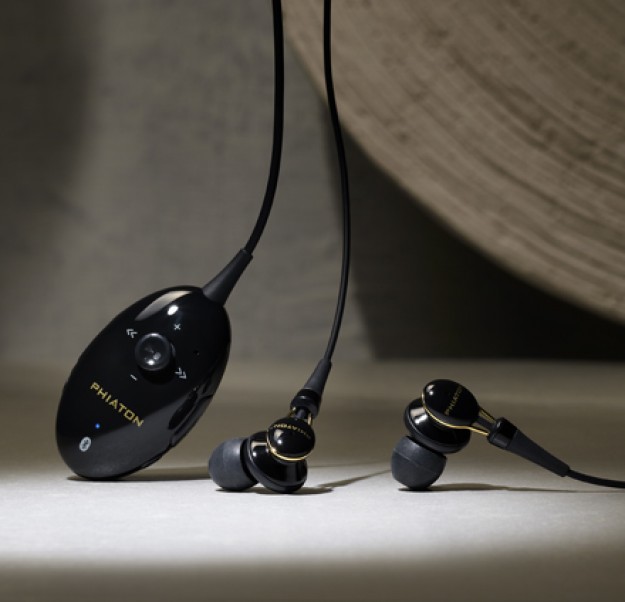 Headphone maker Phiaton has just announced a new addition to its product family, the PS 20 BT. If the PS 20 model sounds familiar, that may be because we reviewed the PS 20 NC noise-cancelling headphones around this time last year (and liked ’em). These in-ears are a bit different, though. The BT, if you haven’t sorted it out already, stands for Bluetooth, making this particular model wireless. Even better is that they are Bluetooth-3.0 compliant.
Headphone maker Phiaton has just announced a new addition to its product family, the PS 20 BT. If the PS 20 model sounds familiar, that may be because we reviewed the PS 20 NC noise-cancelling headphones around this time last year (and liked ’em). These in-ears are a bit different, though. The BT, if you haven’t sorted it out already, stands for Bluetooth, making this particular model wireless. Even better is that they are Bluetooth-3.0 compliant.
What’s so neat about Bluetooth 3.0? For starters, higher bandwidth. While earlier Bluetooth profiles worked by sending data exclusively over the 2.4GHz radio frequency, Bluetooth 3.0 only uses the 2.4GHz frequency for basic operations like pairing up devices. For the heavy duty data load, Bluetooth 3.0 turns to Wi-Fi (802.11). That means more information can be sent between a sound source and the PS 20 BT. More info equals better sound quality, which is great because most Bluetooth 2.1-enabled audio devices sound little better than a cordless phone. The other chief benefit is significantly reduced power consumption.
The catch? In order to enjoy the improved sound quality, your source (phone, computer…whatever) has to be Bluetooth-3.0 compliant as well. Right now, there are just a handful of music-streaming Bluetooth 3.0 devices. The Samsung Galaxy Tab happens to be one of them. iPhone owners, for the moment anyway, are out of luck. We’ll have to wait and see if the iPhone 5 will actually support Bluetooth 4.0 as rumored. Perhaps we’ll know in a week or so?
The PS 20 BT features the same half in-ear design as the PS 20 NC. In fact, we wouldn’t be surprised to learn that the drivers inside these Bluetooth earbuds were exactly the same as the noise-cancelling model. But, the similarities stop there. In place of the noise cancelling module is an oval-shaped control pad that allows for volume control, track advancement and phone call control. Wait…did we forget to mention these supported phone calls, too?
As a matter of fact, they do. In addition, the PS 20 NC are said to be capable of pairing to up to eight devices at a time and actually function with two of those devices simultaneously. Meaning, you could be paired up to a Bluetooth laptop for listening to music while simultaneously paired with a phone. Should a call come in, music can be paused and the phone answered. Slick.
Will the sound good, though? Given that the earphones themselves appear to be similar to the PS 20 NC, we’ll say they are certainly capable of sounding great. We just think that the real key to sound quality here is heavily linked to the availability of Bluetooth 3.0 sources. We’ll know for sure soon enough. There’s a pair sitting on our desk right now and we’ll have that review for you very soon.




